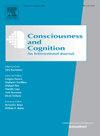Functional reorganization of the brain in distinct frequency bands during eyes-open meditation
Abstract
Meditation is a self-regulatory process practiced primarily to reduce stress, manage emotions and mental health. The objective of this work is to study the information exchange between electrodes within and across the hemispheres during meditation using functional connectivity (FC) measures. We investigate the changes in the coherence between EEG electrode pairs during the meditation with open eyes practiced by long-term Brahmakumaris Rajyoga meditators and during listening to music by controls as the comparable task. FC derived from coherency, pairwise phase consistency (PPC) is used to study the changes in intra and interhemispheric coherence. Integrating connectivity (IC) derived from node degree strength has also been analyzed. Meditators show increased PPC in higher theta and alpha bands both within and across hemispheres. However, the control subjects with no knowledge of meditation show no change in theta band during the music session. Further, during baseline conditions, higher interhemispheric anterior to posterior IC is found in meditators in higher beta and slow gamma bands than controls. Distinct patterns of changes are observed with the PPC and IC measures in different frequency bands during meditation in the meditators and music-listening session in the control subjects indicating varied information processing between the right and left hemispheres. Increased IC is found between the frontal electrodes implying increased self-awareness in meditators. The PPC between the occipital electrodes in meditators is less than the controls in baseline condition indicating a possible modified visual information processing in Rajyoga meditators due to the long-term practice of meditation with open eyes. Overall, the changes in PPC and associated IC indicate increased functional integration during meditation supporting the hypothesis of communication through coherence and cortical integration theory during the non-ordinary state of consciousness induced by meditation.

 求助内容:
求助内容: 应助结果提醒方式:
应助结果提醒方式:


